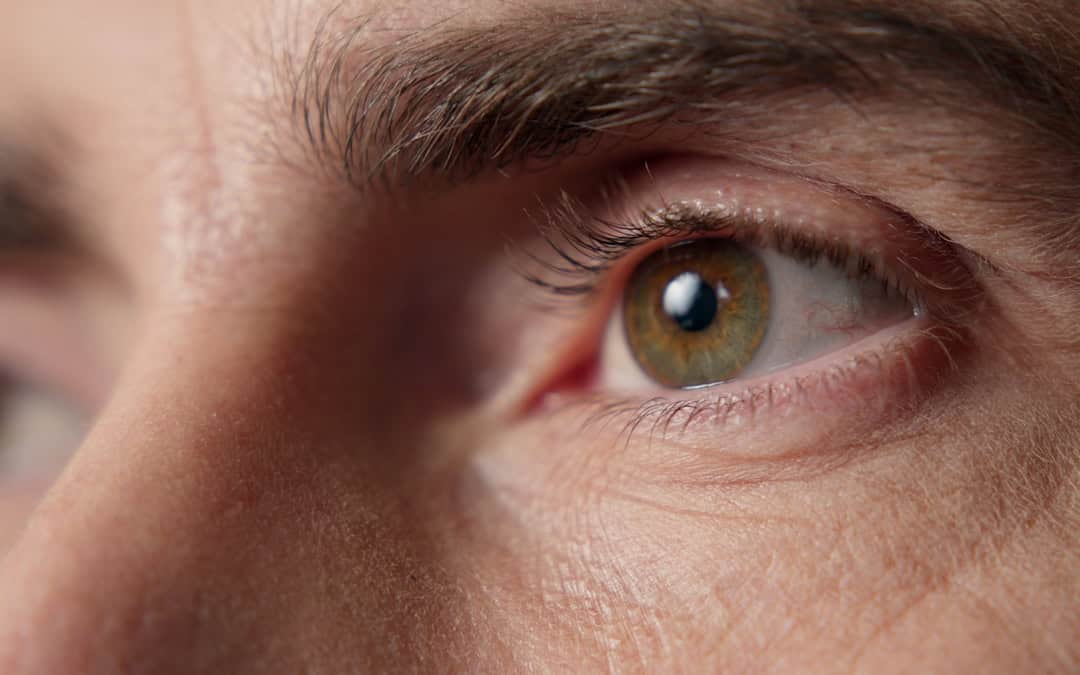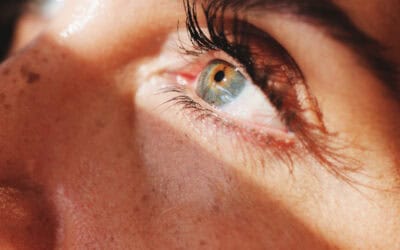About half of people with glaucoma don’t know they have it. This staggering statistic reveals the stealthy nature of glaucoma, one of the leading causes of blindness for people over 60.
Most forms of glaucoma work silently, damaging your vision without triggering any warning signs. This silent progression makes glaucoma particularly dangerous to your eyesight.
What’s even more concerning is how this condition operates once it takes hold. Most people with primary open-angle glaucoma notice no change in their vision until significant damage has already occurred. While some individuals might experience early warning signs, the majority of patients detect no vision loss until the disease reaches an advanced stage.
Glaucoma can be managed effectively when caught early.
The good news: glaucoma can be managed effectively when caught early. Despite being the second leading cause of blindness worldwide, vision loss from glaucoma can be slowed or prevented if detected in time.
While no cure currently exists for glaucoma, treatment options can help preserve your sight when the condition is caught in its beginning stages. Your vision deserves this protection, and understanding what to watch for could make all the difference.
What Is Usually the First Sign of Glaucoma?
Glaucoma operates like a stealthy intruder, beginning its assault on your vision long before you realize anything is wrong. Unlike other eye conditions that announce themselves with obvious pain or redness, glaucoma typically develops without warning signs until permanent damage has occurred.
Peripheral vision loss: the silent symptom
Your peripheral vision becomes glaucoma’s first target. The condition gradually steals your side vision, starting with areas closest to your nose before slowly expanding outward. What makes this symptom particularly dangerous is that it begins very subtly and most people won’t notice these small blind spots developing in their visual field.
Your brain works against you here, naturally compensating for minor vision changes so effectively that you might miss these early warning signs entirely. This biological adaptation, normally helpful, becomes your enemy when fighting glaucoma.
Practical difficulties eventually emerge as the eye disease progresses. You might miss a stair when walking downstairs, struggle to see contrast in dim lighting, or find yourself having trouble reading road signs while driving. Unfortunately, these functional impairments signal that significant nerve damage has typically already occurred.
Difficulty adjusting to low light
Low-light environments can also reveal glaucoma’s presence long before other symptoms appear. Research shows that even patients with early-stage glaucoma report significantly more trouble in low-light or changing lighting conditions compared to people without the condition.
These difficulties show up in specific ways:
- Needing more light to see clearly (affecting 58% of people with early or moderate glaucoma)
- Slower adaptation when moving from bright to dark environments
- Increased sensitivity to glare from headlights or streetlamps
- Reduced contrast sensitivity, making objects harder to distinguish from backgrounds
Mild eye discomfort or pressure
Some people experience subtle discomfort before more obvious symptoms develop, although this is less common. The discomfort might include the sensation of mild eye pressure, occasional headaches, or slightly blurred vision. However, many people with the most common type of glaucoma called open-angle glaucoma experience no pain or discomfort whatsoever during early stages.
Glaucoma damage cannot be reversed. This reality makes identifying these early warning signs critical for protecting your sight. Unfortunately, because symptoms develop gradually and painlessly, regular eye exams remain your strongest defense against this silent thief of sight.
Different Types of Glaucoma and How They Show Up
Glaucoma appears in several distinct forms, each attacking your vision through different mechanisms. Think of your eye’s drainage system like the drain in a sink: when different parts malfunction, you get different types of problems.
Open-angle glaucoma: slow and unnoticed
Primary open-angle glaucoma affects 9 in 10 people in the United States that have the disease. It works like a slow leak in your eye’s drainage system. The drainage angle between your iris and cornea stays open, but other parts of the system gradually clog up. This creates a steady buildup of pressure that damages your optic nerve over months and years.
Most patients experience no symptoms whatsoever until significant damage occurs. You won’t feel pain, pressure, or discomfort. The condition progresses so silently that you’ll typically notice nothing until peripheral vision begins disappearing—and by then, permanent damage has already happened.
Angle-closure glaucoma: sudden and painful
Angle-closure glaucoma strikes like a medical emergency. Your iris bulges forward, partially or completely blocking the drainage angle. Unlike the gradual pressure buildup of open-angle glaucoma, this creates a sudden, dramatic spike in eye pressure.
The symptoms hit hard and fast: severe eye pain, redness, blurred vision, rainbow-colored rings around lights, headaches, nausea, and vomiting. Acute angle-closure glaucoma can destroy vision within hours if left untreated. These symptoms should be treated as a true eye emergency and you should seek immediate medical attention.
Normal-tension glaucoma: damage without high pressure
Some people develop optic nerve damage despite maintaining normal eye pressure (10-21mm Hg). This puzzling form shows how glaucoma involves more than just pressure as the unique vulnerability of your optic nerve also plays a crucial role in the condition.
Patients with normal-tension glaucoma tend to show visual field problems closer to central vision and experience more frequent optic nerve hemorrhages. This type of glaucoma often appears in parallel with migraines, low blood pressure, and heart problems, which suggests that there may be broader vascular connections.
Childhood glaucoma: signs in infants and toddlers
Rare but serious, childhood glaucoma typically appears before age three. Most children receive their diagnosis before 6 months old. Parents usually notice excessive tearing, light sensitivity, and cloudy enlarged corneas that make the eye appear bigger than normal.
The condition develops when abnormal eye development blocks fluid drainage. Without prompt treatment, progressive corneal clouding leads to blindness. Early intervention becomes critical for preserving a child’s developing vision.
How Glaucoma Is Diagnosed and Why Timing Matters
Glaucoma damage can occur long before you notice any symptoms. This makes specialized testing essential for early detection. Comprehensive eye exams, including those provided by optometrists in Pittsburgh at Chang Eye Group, provide your strongest defense against permanent vision loss from this silent condition.
Eye pressure tests and tonometry
Measuring intraocular pressure (IOP) serves as a fundamental step in glaucoma assessment. During tonometry, your eye doctor will numb your eye with drops before using a specialized device that gently touches or blows air onto your cornea to measure pressure. Normal readings typically range from 10-21 mm Hg, though some people develop glaucoma even with pressure readings in this range.
Ophthalmologists and glaucoma specialists will often use multiple tonometry methods when readings raise concerns.
Visual field testing for side vision
This critical test creates a detailed map of your peripheral vision to identify blind spots that indicate nerve damage. You’ll look straight ahead at a steady light while responding to flashes appearing in different locations throughout your visual field. The test identifies specific areas where your vision has become less sensitive to light.
For the most accurate results, arrive well-rested and use artificial tears before testing if you have dry eyes. Regular visual field tests help your doctor track how quickly glaucoma might be progressing over time.
Optic nerve imaging and monitoring
Modern imaging technology provides objective measurements of your optic nerve and nerve fiber layer. Optical Coherence Tomography (OCT) uses laser light reflections to create detailed 3D representations of your eye’s internal structures. These images allow doctors to detect early signs of glaucoma such as a thinning of the nerve fiber layer, often before visual field changes become apparent.
Why LASIK history matters in diagnosis
Previous LASIK surgery significantly impacts glaucoma diagnosis accuracy. The procedure thins your cornea, causing artificially lower pressure readings. This underestimation can delay glaucoma detection since accurate pressure assessment becomes more challenging.
Always inform your eye doctor about any refractive surgery that you may have had on one or both eyes.
Preventing Vision Loss: What You Can Do Today
Your proactive steps today can make the difference between keeping your sight and losing it forever. Most people discover their glaucoma only after permanent damage has occurred, making early intervention absolutely critical for protecting your vision.
Importance of regular eye exams
Regular eye exams represent your strongest defense against glaucoma’s silent progression. The American Optometric Association recommends exams at least every two years for those under 64, and annually after 65. Those with high risk factors need screening more frequently as regular monitoring by a glaucoma specialist ensures any treatment remains effective.
Don’t wait for symptoms to appear. Remember that glaucoma damage cannot be reversed once it occurs, making regular eye exams essential for catching problems while treatment options remain most effective.
Using prescribed eye drops consistently
Some studies have shown that nearly 50% of glaucoma patients stop taking their medications within six months. It’s important to understand that prescription eye drops must be used consistently, even if you do not feel any symptoms. Skipping or forgetting to use the drops can increase eye pressure and cause progressive vision loss.
Consider setting daily alarms as reminders and maintaining a consistent medication supply. Your commitment to this daily routine could preserve your sight for decades to come.
Protecting your eyes from injury
Proper eye protection prevents over 90% of eye injuries. Serious eye injuries can lead to traumatic glaucoma, adding another risk factor to your eye health.
Always wear safety glasses, goggles, or face shields during high-risk activities.
Knowing your family’s eye health history
Genetic studies suggest that approximately 50% of glaucoma cases are familial. If you have glaucoma, inform your relatives as they face up to 10 times higher risk of also developing the condition. This conversation could literally save their sight by encouraging earlier and more frequent screening.
Schedule a glaucoma screening in Pittsburgh at Chang Eye Group especially if glaucoma runs in your family. Understanding your genetic risk helps determine the right screening schedule for your unique situation.
Protecting Your Vision: The Decision That Matters Most
Glaucoma works as a silent thief, quietly stealing your sight while you remain completely unaware of the damage taking place. Many patients discover their condition only after substantial vision loss has already occurred. Yet this doesn’t have to be your story.
Your awareness and action can make all the difference in preserving your sight. Changes in peripheral vision, trouble adjusting to dim lighting, or subtle eye discomfort deserve immediate attention from an eye care specialist. Understanding your family’s eye health history provides valuable insight into your personal risk, as genetics can play a significant role in glaucoma development.
Early detection remains your most powerful weapon against glaucoma. Regular eye exams, consistent use of prescribed medications when needed, and protecting your eyes from injury create a strong defense against vision loss. These steps become particularly important if you face higher risk factors such as being over 60, family history, or previous eye trauma.
While there is currently no cure for glaucoma, proper treatment can effectively slow or stop its progression when caught early. Don’t wait for symptoms to appear. Schedule a glaucoma screening at Chang Eye Group in Pittsburgh to ensure your vision receives the protection it deserves. Your eyesight is irreplaceable, and the time to act is now.
FAQs
Q: What are the early warning signs of glaucoma?
A: Early signs of glaucoma are often subtle and may include gradual loss of peripheral vision, difficulty adjusting to low light conditions, and in some cases, mild eye discomfort or pressure. However, many people don’t experience noticeable symptoms until significant damage has occurred.
Q: How is glaucoma typically diagnosed?
A: Glaucoma is diagnosed through comprehensive eye exams that include tests such as tonometry to measure eye pressure, visual field testing to assess peripheral vision, and optic nerve imaging. Regular eye check-ups are crucial for early detection and management of the condition.
Q: Can glaucoma be prevented?
A: While glaucoma can’t be entirely prevented, its progression can be slowed or halted with early detection and treatment. Regular eye exams, consistent use of prescribed medications, and protecting eyes from injury are key steps in managing the condition and preserving vision.
Q: Are there different types of glaucoma?
A: Yes, there are several types of glaucoma. The most common is open-angle glaucoma, which develops slowly and often without noticeable symptoms. Other types include angle-closure glaucoma, which can occur suddenly with severe symptoms, and normal-tension glaucoma, where optic nerve damage occurs despite normal eye pressure.
Q: How important is family history in glaucoma risk?
A: Family history plays a significant role in glaucoma risk. If you have a close relative with glaucoma, your risk of developing the condition can be up to 10 times higher. It’s crucial to inform your eye care professional about your family’s eye health history during check-ups.






